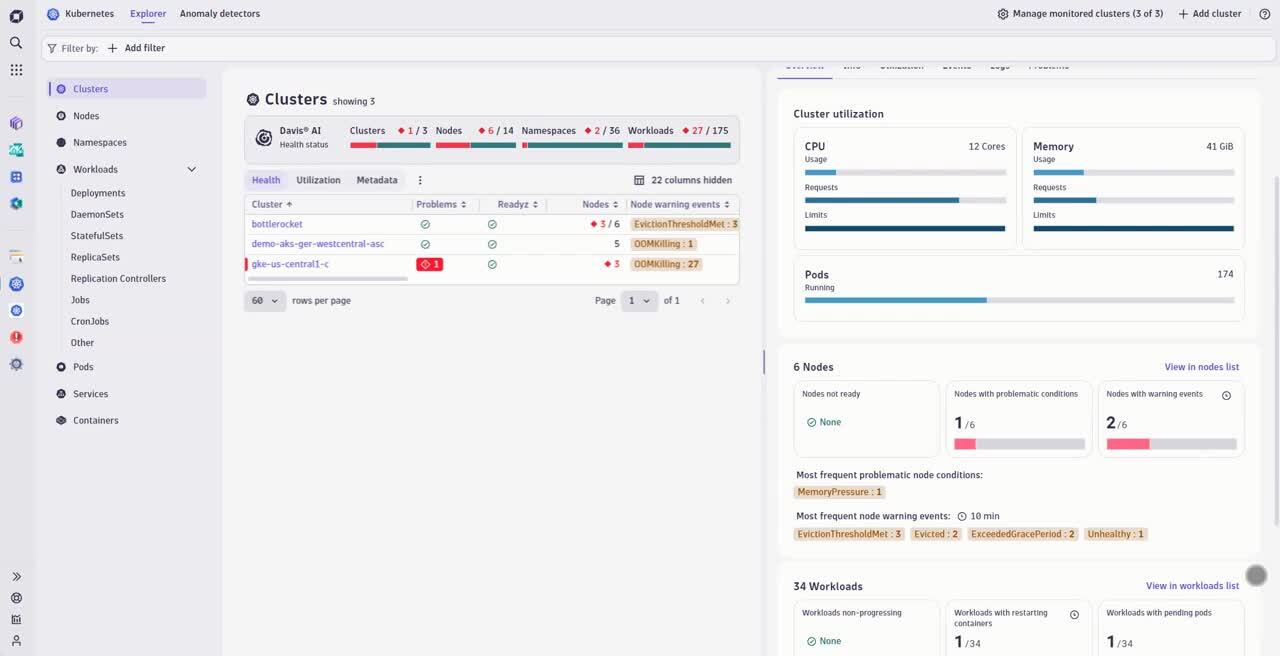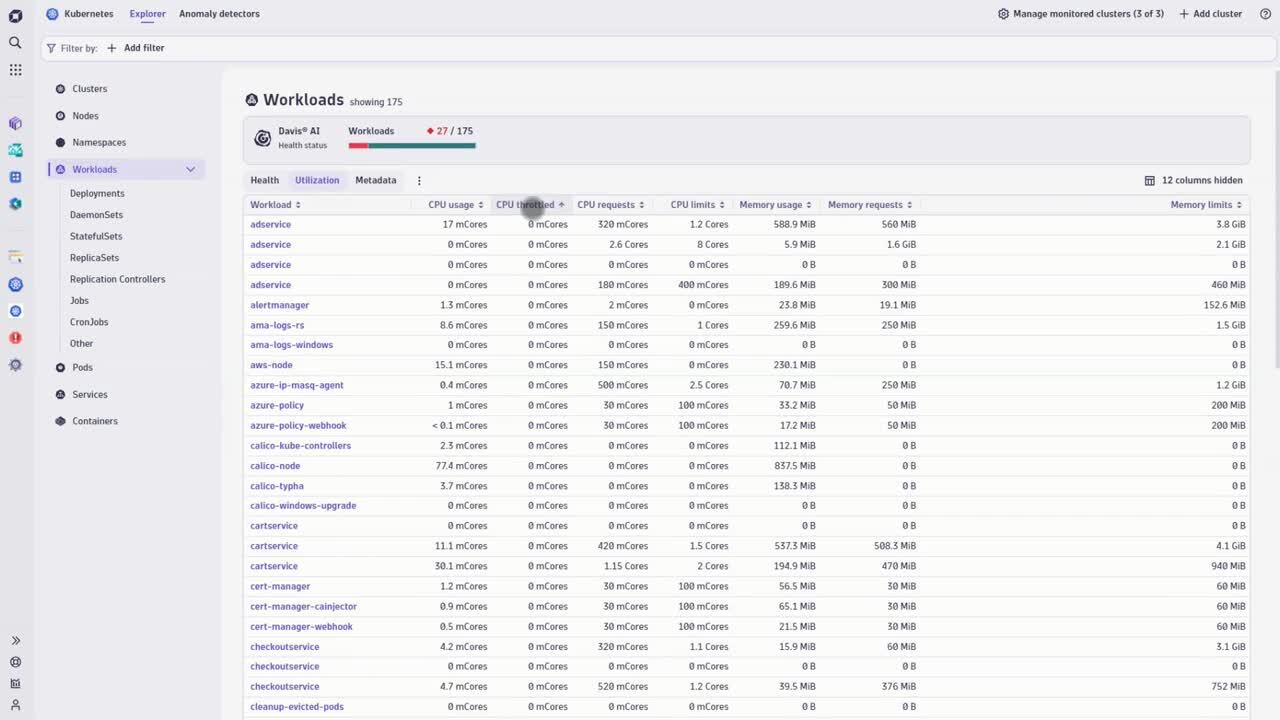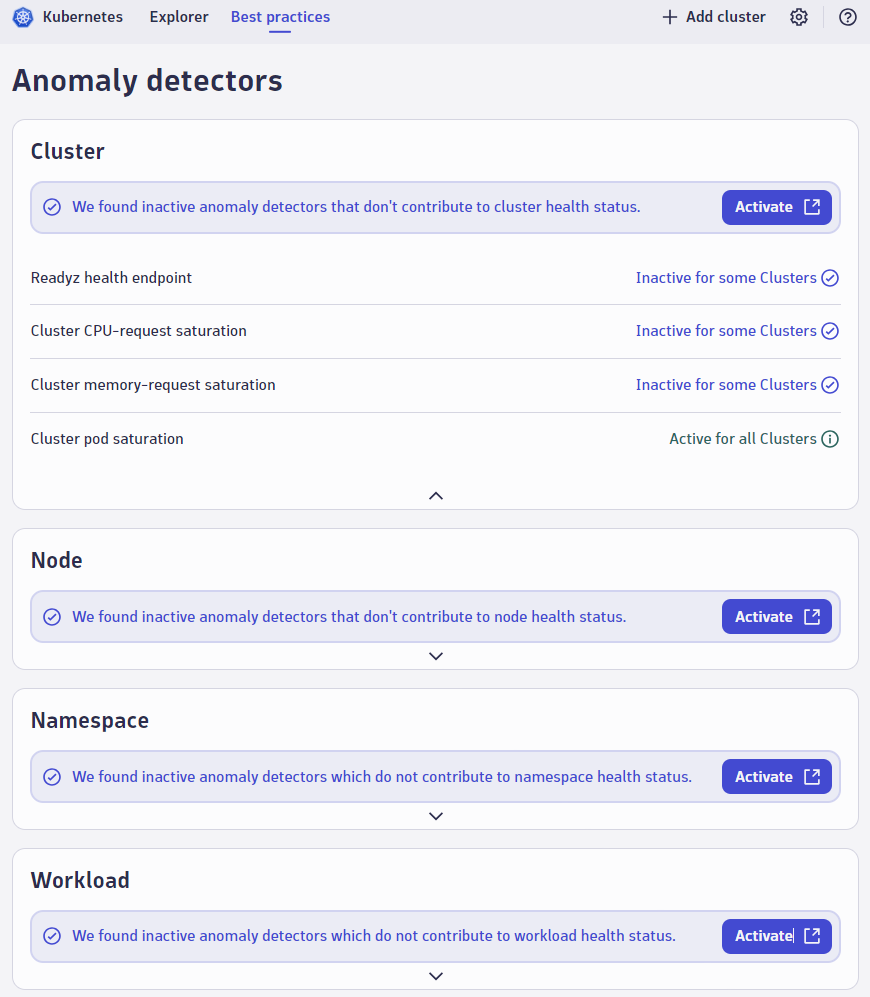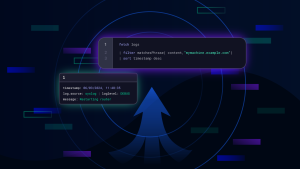Platform engineering is on the rise. According to leading analyst firm Gartner, “80% of software engineering organizations will establish platform teams as internal providers of reusable services, components, and tools for application delivery…” by 2026. The development of internal platform teams has taken off in the last three years, primarily in response to the challenges inherent in scaling modern, containerized IT infrastructures. The old saying in the software development community, “You build it, you run it,” no longer works as a scalable approach in the modern cloud-native world.
For IT teams looking to implement DevSecOps and platform engineering, the new Dynatrace Kubernetes experience just made container standardization, self-service, and automation much easier.
Platform engineering provides developers with a standard set of tools and a reliable, secure environment for streamlining software development and reducing the cognitive load so they can focus on developing and deploying high-quality applications.
Kubernetes, known as the “platform for building platforms,” has broad adoption among enterprise organizations in running, managing, and orchestrating containerized environments at scale. A Kubernetes-centric Internal Development Platform (IDP) enables platform engineering teams to provide self-service capabilities and features to their DevSecOps teams who need resilient, available, and secure infrastructure to build and deploy business-critical customer applications.
A Kubernetes-centric IDP that is to be broadly adopted by internal dev teams requires numerous other services and components to deliver on its promise of unlocking DevSecOps at scale. This complex web of interconnected technologies across a containerized environment introduces various challenges related to visibility, resource utilization, security, orchestration, and collaboration. To tackle these challenges, Dynatrace developed a purpose-built solution for platform engineering teams that reduces complexity through automated workflows, including auto-scaling, deployment validation, and anomaly remediation.
With the Dynatrace® platform and the new Kubernetes experience, platform engineers can implement the following best practices, thereby enabling their dev teams to deliver best-in-class applications and services to their customers.
Platform engineering best practices for delivering a highly available, secure, and resilient Internal Development Platform:
- Centralize and standardize. The ability to effectively manage multi-cluster infrastructure is critical to consistent and scalable service delivery.
- Provide self-service platform services with dedicated UI for development teams to improve developer experience and increase speed of delivery.
- Automation, automation, automation. Adoption of GitOps practices enables platform provisioning at scale.
Kubernetes experience centralizes platform capabilities for greater efficiency
According to research findings from the 2023 State of DevOps Report, “36% of organizations believe that their team would perform better if it was more centralized.” To establish scalable cluster lifecycle management within a diverse multi-cluster environment featuring various distributions, a critical requirement is a centralized repository with a single source of truth. This centralized view serves as the hub for ingesting, visualizing, and analyzing telemetry data from different layers of the Kubernetes stack. It enables the execution of configuration actions based on observability insights, such as resource consumption and performance management across all clusters. Furthermore, a centralized Kubernetes management view offers extended centralized monitoring and alerting capabilities, particularly for node failure incidents.

In this context, Dynatrace is an integral component of a centralized Kubernetes management console, contributing to enhanced observability, efficient cluster management, and robust alerting.
The Kubernetes experience marks a groundbreaking advancement for platform engineering teams. Organizations will be able to easily pull in critical observability and security information to a centralized Kubernetes management console in a way that seamlessly integrates with a wide range of Kubernetes variations and showcases its remarkable adaptability, whether in the cloud or on-premises. Designed with platform engineering in mind, a new user interface boasts an intuitive, user-friendly experience for exploring cluster health, resource utilization, security, and performance of applications built and deployed on a Kubernetes-centric platform.

Additionally, users benefit from the Dynatrace Davis® AI engine, which offers proactive monitoring and analysis, such as real-time tracking and alerting for critical health signals. This includes out-of-the-box health alerts, health indicators, problematic workload and node condition identification, and warning events for various Kubernetes components. By leveraging Davis AI, the Kubernetes experience also provides resource consumption insights for efficient cost optimization and management features for scaling multiple teams. Monitoring-as-code can also be configured in GitOps fashion.

Open source logs and metrics take precedence in the monitoring process. In addition, Dynatrace effortlessly collects crucial DORA metrics, service level objectives (SLOs), and business analytics data using its robust unified data platform, Dynatrace Grail™. With Grail, teams can construct personalized dashboards for well-informed decision-making and continuous enhancement.
Kubernetes experience improves the developer experience through self-service
The main goal of platform engineering is to create a stable and efficient foundation on which development teams can innovate their software solutions without being burdened by the complex requirements of infrastructure management. This “development environment as a service” concept envisions the entire process executing as smoothly as possible, enabling DevSecOps teams to avoid individual configurations—thereby decreasing their cognitive workload and allowing them to focus on building great software.
With the Kubernetes experience, platform engineers can enable observability features for their applications using a simple toggle in the Dynatrace web UI. This way, DevSecOps teams can independently decide which namespaces they want to enable APM for, all the way down to self-service log collection.
In addition, collaboration between DevSecOps and platform engineering teams is strengthened as both teams look at two sides of the same coin with the same data related to resource utilization and application performance. Both teams see the same picture and work hand-in-hand, preventing barriers from forming between teams and breaking down silos. In the recent 2023 State of DevOps Report, research found that two of the biggest benefits of adopting a platform engineering approach were improved productivity and increased speed of delivery. (Source: 2023 State of DevOps Report)
Automate with GitOps for platform provisioning at scale
GitOps is a modern software development and operations approach gaining industry-wide traction with tools such as ArgoCD and Flux. This approach leverages the power of Git, a widely used version control system, as the ultimate source of truth for orchestrating the full lifecycle of infrastructure and application deployments. GitOps uses Infrastructure as Code (IaC) and Configuration as Code (CaC) to enable automated and efficient management of cloud-native applications and infrastructure.
The Kubernetes experience follows the long-standing Dynatrace commitment to monitoring-as-code and an API-first approach. Following the GitOps approach, teams can configure Dynatrace as code, enabling platform engineers to configure Kubernetes clusters with built-in observability and security. It’s never been easier to define observability configurations and access permissions as code. Platform engineers place a high value on staying informed, giving developers the ability to express their application expectations. All this can be self-defined in the source code. As Dynatrace now has knowledge of the owners, the Davis AI engine can assign detected issues to the responsible teams along with SLO impact, ensuring timely notification.
Dynatrace Operator, built on native Kubernetes paradigms, is the perfect solution for engineers using GitOps to break down siloes across development and operations teams, leading to more effective development cycles. Dynatrace Operator enables full automation with the ability to define unique observability requirements via custom resources—all managed with common GitOps tools like ArgoCD or Jenkins.
Finally, pricing that is simple, fair, and transparent
Dynatrace is revolutionizing Kubernetes pricing with the introduction of a consumption-based model that’s based on pods.
Now you can predict what you need and only pay for what you use. Under the new model, you only pay for monitored workloads—not the hosts behind them. This enables Kubernetes monitoring that scales with your business and eliminates surprising overage fees.
The Kubernetes experience is now part of the Dynatrace Platform Subscription. Say goodbye to high watermark pricing.
Better software, faster. See for yourself.
Join our own Safia Gourani to see a demo of the new Kubernetes experience: Automate Kubernetes observability with Dynatrace, The Kubernetes experience is now available on all Dynatrace SaaS environments.
Curious to see how you can simplify your cloud and maximize the impact of your digital teams today? Sign up for a free 15-day Dynatrace trial.





Looking for answers?
Start a new discussion or ask for help in our Q&A forum.
Go to forum